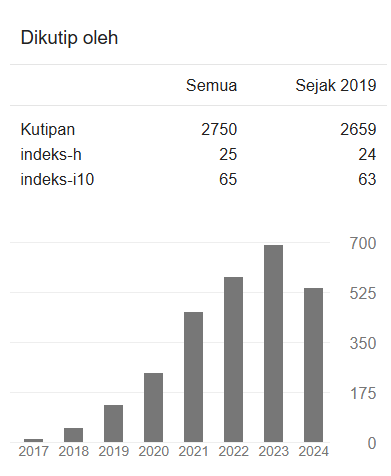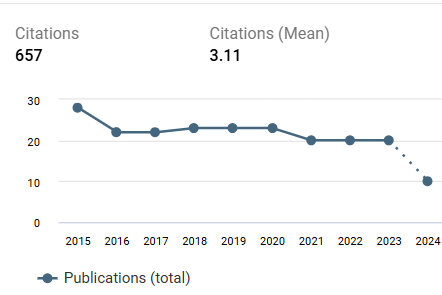PEMBELAJARAN MENULIS KARYA ILMIAH BERBASIS DEEP DIALOGUE CRITICAL-CREATIVE THINKING (DDCCT)
DOI:
https://doi.org/10.22219/jinop.v4i1.5718Keywords:
learning, scientific papers, the Rules of Indonesian language, DDCTAbstract
Abstrak:Kendala yang sering ditemukan dalam pembelajaran menulis karya ilmiah di perguruan tinggi adalah menemukan, memilih, memerinci, dan mengembangan topik menjadi tulisan karya ilmiah yang logis dan sistematis sesuai dengan kaidah Bahasa Indonesia. Beberapa semester terakhir, penulis menerapkanmetode deep dialogue critical dan creative thinking (DDCCT) untuk membimbing mahasiswa mengatasi kesulitan tersebut. Prinsip penerapan metode DDCCT dalam pembelajaran menulis karya ilmiah adalah untuk mengekplorasi pengalaman, pengetahuan yang dimiliki mahasiswa, mengamati potensi lingkungannya melalui dialog secara mendalam dan berpikir kritis-kreatif untuk melakukan inovasi kreatif dalam tulisan karya ilmiah. Berdasarkan hasil penerapan metode DDCCT, ditemukan hasil yaitu: (1) DDCCT dapat meningkatkan antusias selama proses pembelajaran menulis karya ilmiah; (2) DDCCT dapat mengoptimalisasikan potensi inteligensi mahasiswa untuk menemukan, memilih, memerinci, dan mengembangkan topik berdasarkan pengalaman, pengetahuan, dan potensi di lingkungannya; (3) mental, emosional, dan spiritual mahasiswa berkembang seimbang selama dialog berlangsung; (4); mahasiswa dan dosen dapat menjadi pendengar, pembicara, penulis, dan pemikir yang baik; dan (5) metodeDDCT ini mudah diimplementasikan dalam matakuliah lainnya, karena lebih menekankan pada aspek nilai, sikap dan kepribadian (sportifivitas). Dengan demikian pembelajaran menulis karya ilmiah berbasis DDCCT dapat meningkatkan hard skill dan soft skill dalam menulis karya ilmiah maupun mengomunikasikannya secara lisan.
Kata kunci: pembelajaran, menulis karya ilmiah, Kaidah Bahasa Indonesia, DDCCT
Abstract: Frequent problems to be found in scientific writing learning in a higher institution are to find, choose, describe, and develop topic into a logic and sistematic scientific papers according to the Rules of Indonesian Language. For several last semesters, the writer applied a method of deep dialogue critical and creative thinking(DDCCT) to guide her pupils to solve those problem. The principal method of DDCCT in scientific journal writing’s learning was to explore the experience, knowledge that was acquierd by the writer’s students, to observe its surrounding’s potential through deep dialogue and having a creative-critical thought to execute a creative innovation in scrientif journal. According to the result of DDCCT application, there were discovered (1) DDCCT could increase enthusiasm during learning process of writing scientific journal; (2) DDCCT could optimalize intellegence potential of students to find, choose, describe, and develop a topic based on experience, knowledge, and its surrounding potential; (3) mentality, emotional, and spiritual aspect of students was developed during dialogue; (4) students and lecturer could be a decent listener, talker, and thinker; and (5) DDCCT’s method was easy to be implemented in other subjects because it’s more emphasizing the aspect of attitude’s value and personality(sportivity). Therefore learning of scientific journal writing based on DDCCT can increase hard skill and soft skill in writing a scientific journal as well as communicating it verbally.
Keyword: learning, scientific papers, the Rules of Indonesian language, DDCT
PEMBELAJARAN MENULIS KARYA ILMIAH
BERBASISDEEP DIALOGUECRITICAL-CREATIVE THINKING
Downloads
Downloads
Published
How to Cite
Issue
Section
License
Copyright Notice
Authors who publish with JINoP (Jurnal Inoasi Pembelajaran) agree to the following terms:
- For all articles published in the JINoP (Jurnal Inovasi Pembelajaran), copyright is retained by the authors. Authors give permission to the publisher to announce the work with conditions. When the manuscript is accepted for publication, the authors agree to the automatic transfer of the publishing right to the publisher.
- Authors retain copyright and grant the journal the right of first publication with the work simultaneously licensed under a Creative Commons Attribution 4.0 International License. that allows others to share the work with an acknowledgment of the work's authorship and initial publication in this journal.
- Authors are able to enter into separate, additional contractual arrangements for the non-exclusive distribution of the journal's published version of the work (e.g., post it to an institutional repository or publish it in a book), with an acknowledgment of its initial publication in this journal.
- Authors are permitted and encouraged to post their work online (e.g., in institutional repositories or on their website) prior to and during the submission process, as it can lead to productive exchanges, as well as earlier and greater citation of published work (See The Effect of Open Access).








